Could a historic Sacramento corridor hold the key to solving the region’s housing crisis?
Climate change is global but the actions we take here in Sacramento play a role in shaping our environmental future. The Sacramento Bee is undertaking a collaboration with you to examine and celebrate bold and ambitious climate actions that have yielded evidence that they’re making progress here and elsewhere. The goal is to engage you and your neighbors in a hopeful discussion about how we can face climate change with urgency and equity.
On a recent warm spring evening, couples sat outside the popular Salt & Straw ice cream shop on Sacramento’s R Street eating dessert. The patio at the acclaimed Beast + Bounty restaurant was full. A couple blocks away, concert goers were getting ready for a show at Ace of Spades, one of the city’s most popular live music venues.
R Street in downtown and midtown is lined by hundreds of apartments, high-end restaurants and wide, welcoming sidewalks. A Sacramento Regional Transit light rail line runs adjacent to much of the corridor, and hundreds of more housing units are either under construction or being planned, as is a 2,300-seat music venue.
It took decades to develop, but the R Street corridor in Sacramento has not only become a flourishing transit-oriented neighborhood. It is arguably the region’s most successful urban development landscape.
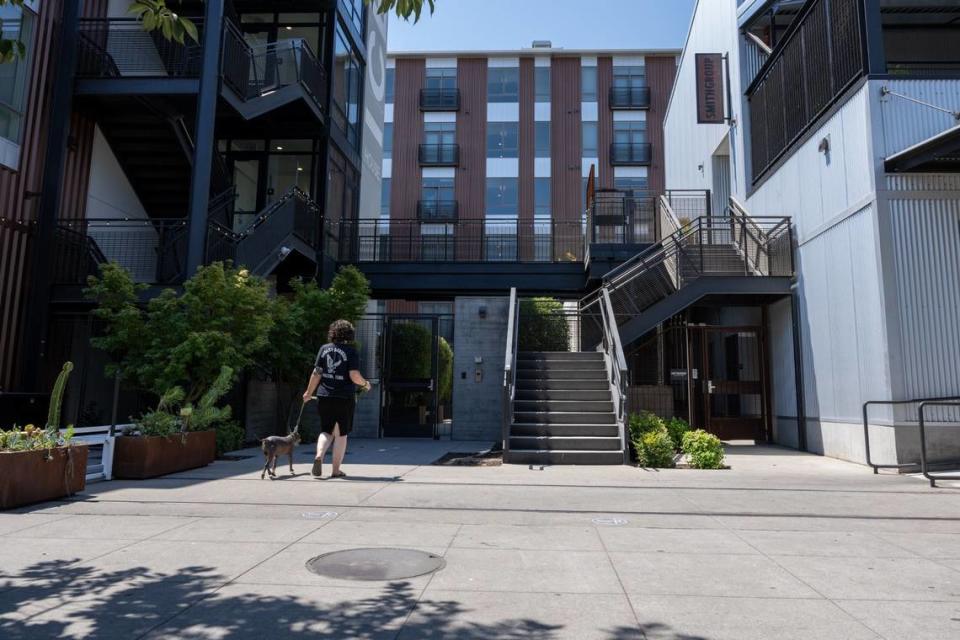
The key to the neighborhood’s success, advocates say, was its design as a transit-oriented neighborhood where people — especially walkers — feel comfortable.
“You have to activate pedestrian spaces,” said Sam Rice, a Sacramento labor relations and transportation expert. “If you make things safe for pedestrians, people will come to those areas and they will want to walk around.”
The work to turn R Street into what it is today took years of patience and investment. Longtime residents remember the run-down apartment buildings and empty warehouses that used to define the district. There were bitter political battles over whether the street should be defined by tall office towers or homes.
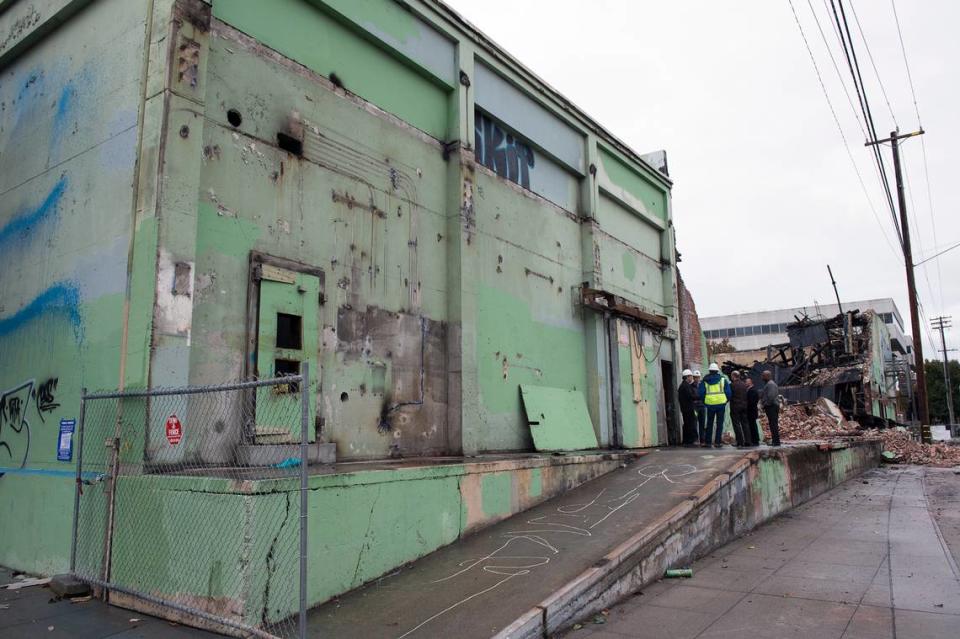
“I think it took a while to get going but now that it is going, it’s a success,” said former Sacramento City Councilman and transit advocate Steve Cohn. “And it shows what can be done with an underutilized corridor.”
The Sacramento region is dotted by opportunities to duplicate R Street’s success, advocates say, and address the region’s persistent and related crises of housing affordability, suburban sprawl and worsening air quality by building new communities close to mass transit. Those opportunities include a 10-acre parcel across the street from a light rail station in Rancho Cordova, a parking lot next to a light rail stop in Folsom, and underused space surrounding transit stations in south Sacramento.
Making use of these under-developed areas near transit hubs also aligns with the recommendations of Sacramento’s and West Sacramento’s Commission on Climate Change. Transportation is a top contributor to the region’s greenhouse gas emissions, and one of the strategies to address this issue lies in curbing single-occupancy vehicle commutes. The commission has recommended that 90% of the cities’ growth should be in city centers and on transit corridors.
Planners, environmentalists and transit advocates also stress that addressing the Sacramento region’s climate and housing crises will require local governments to place more focus on building new homes that are apartments, condos and other compact designs.
That type of housing is generally more affordable, improves open space and, when built in transit-oriented districts such as the R Street corridor, gets people out of cars, a growing necessity for a region where the air consistently ranks among the most polluted in the nation.
Regional planners think more than half the new homes built here should be high-density types such as apartments and condos. But in recent years, less than 30% of the region’s new homes have fit that definition, a far lower percentage than any other major metropolitan area in California, according to the Sacramento Area Council of Governments.
Take this survey to help decide how we plan the Sacramento region’s future
A closer look at what makes R Street work
The first discussions to revitalize the R Street corridor began more than 30 years ago. Around that time, some of the region’s most powerful developers had their sights on building high-rise office towers along R Street, arguing anything else would be a failure.
City officials denied their plans, sticking to a vision of turning R Street into a true 24-hour neighborhood. Still, it wasn’t until about 15 years ago that the corridor began to set a course toward its current revitalization. Public officials installed new lighting, signs and sidewalks. At the time, the additions may have seemed insignificant, but those changes were vital to the success R Street is seeing today.
“We were fortunate that we inherited a great vision that city leaders and CADA (the Capitol Area Development Authority) set forth years ago in the planning of R Street,” said Mike Heller, developer and general partner of the Ice Blocks. “It’s amazing how it seems like it took a long time, but it really isn’t to transform what was a bunch of falling apart warehouses into a vibrant neighborhood.”
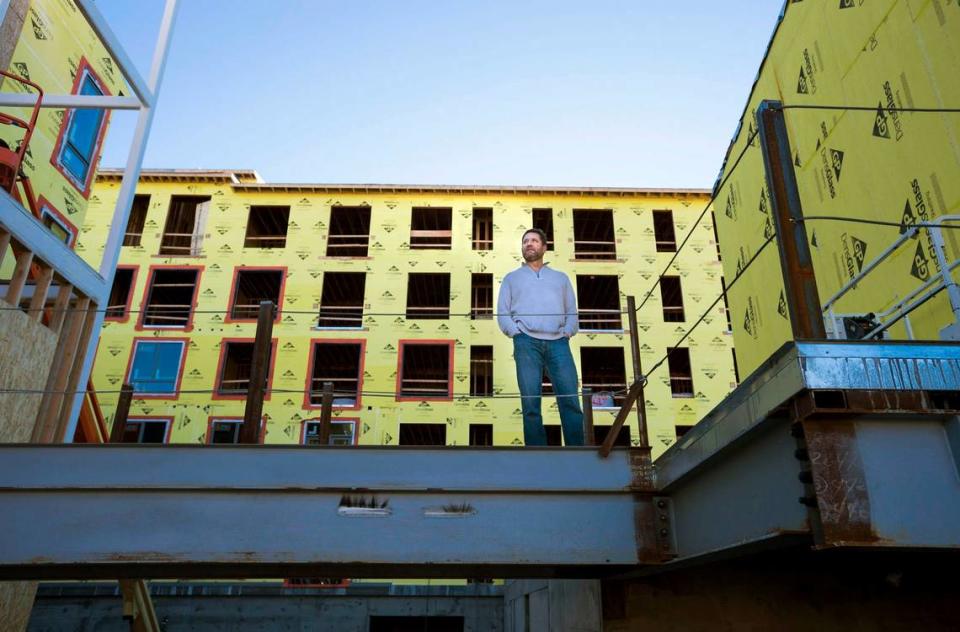
Single-family homes on small lots, some built more than a century ago, line the blocks surrounding the R Street corridor. So do large apartment buildings, such as the highly successful Ice Blocks development between 16th and 18th streets and the Warehouse Artist Lofts between 11th and 12th streets.
“R street can show people what the future is,” Rice said. “When you build mixed-use development combined with retail on safe streets that are pedestrian friendly, you get human beings to live down there and you see economic activity. It’s such a positive success story.”
Heller said every retail and office space at the Ice Blocks is occupied. Nearly every apartment in the complex is leased.
James Fitzpatrick and his husband, Peter Walsh, have lived near the R Street Corridor since 1989. When they first arrived, a nearby apartment building was known as a hotbed of drug dealing and prostitution. Those kinds of issues have almost entirely disappeared from the neighborhood.
“(The area) is a combination of a dense population coupled with the things people in the area want and need – grocery stores, theaters, local restaurants,” Fitzpatrick said. “I walk everywhere. I generally feel very safe.”
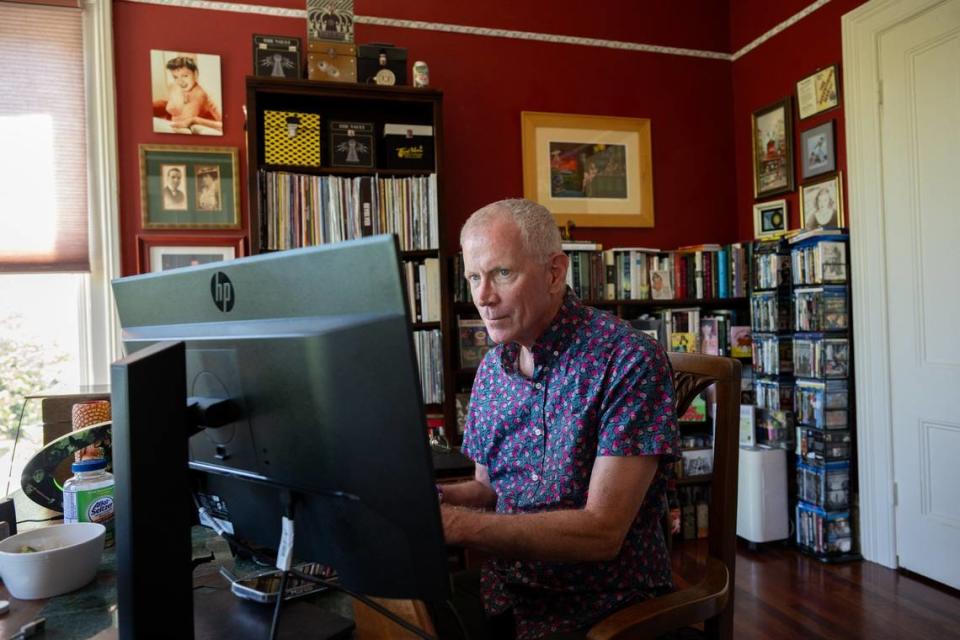
That sense of safety has come at a cost. Heller said the primary challenge facing R Street is the perception among some that the light rail system and city streets are not safe. The district funds private security, he said.
“I never in a million years thought we would have issues with the unhoused and public safety that we are currently experiencing. I did not see that coming,” he said. “How do we make it feel safe for people and inviting? That is a monumental challenge given the state of affairs in the city of Sacramento.”
Despite the challenges, the corridor is extending its reach.
A new 2,300-seat music and entertainment venue is planned for the corner of 24th and R streets, one block from a light rail station. The development team behind the project wrote in its application to the city of Sacramento that the venue “has been designed to take advantage of the development potential of the R Street Corridor and Sacramento’s underutilized transit system.”
Three blocks away, an Orange County-based firm is proposing to tear down the former Sacramento Bee headquarters at 21st and Q streets to make way for 538 apartments and 48 townhomes. The site borders the elevated light rail tracks.
“I think not only the proximity to a transit stop makes it attractive, but the fact that the regional transit is actually used and can be beneficial,” said Brian Rupp, an executive vice president of real estate at Shopoff Realty Investments, which owns the land.
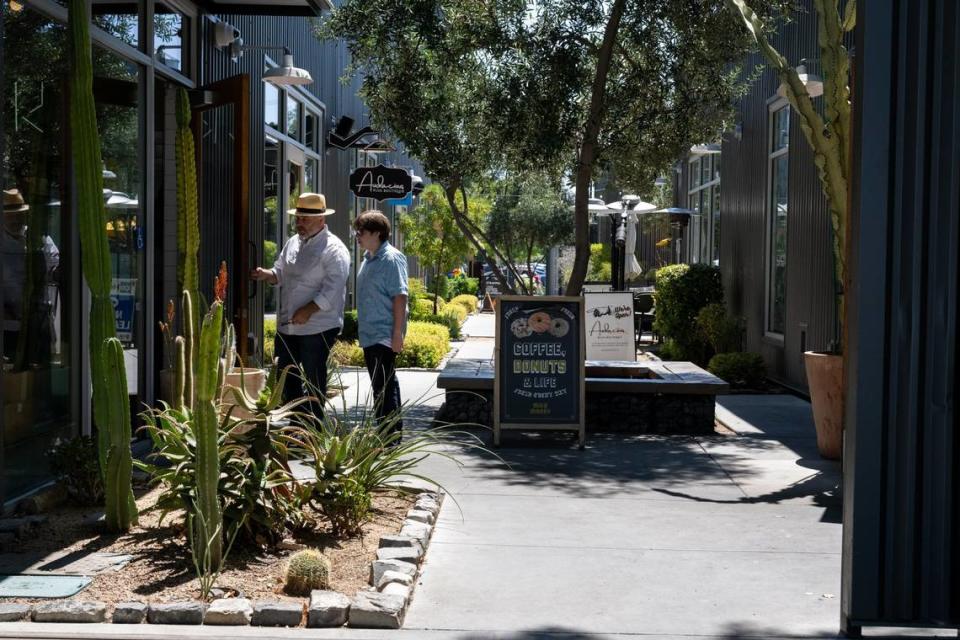
Opportunities across Sacramento
Sacramento Regional Transit began building its light rail system more than 30 years ago and purchased excess land for parking next to many of its stations. “We talked about how we were going to help build housing,” said Chris Flores, the agency’s chief of staff.
Yet it wasn’t until the last few years that the transit agency began to consider seriously how to make better use of all that land. And the need for those large parking lots — some large enough to accommodate 1,000 vehicles — has decreased significantly as rail transit ridership plummeted when the pandemic hit.
A few sites stick out now as opportunities.
Housing and live music: The major developments coming to Sacramento’s R Street Corridor
Large lots near the Florin and Meadowview road stations “are significantly underutilized,” said Jamie Adelman, Sacramento RT’s vice president of procurement, real estate and special projects.
“Our goal for both of those is to cut back significantly on the size of the parking lots and then have development,” Adelman said.
A park-and-ride lot next to the light rail station at Glenn Drive in Folsom is another opportunity.
Opticos, an urban design company, provided city officials in Folsom with a design concept for a mixed-use community on the lot that could include one four-story building and two five-story buildings with 305 apartments and 1,500 square feet of commercial space.
“The community expressed support for more intense development at this location given its adjacency to a light rail station,” Opticos wrote in a report to city officials.
Folsom planners are working on proposed zoning changes that would permit that development and expect to have that work completed by next spring.
Rancho Cordova’s Mills Crossing project is even further along.
The city owns 10 acres across Folsom Boulevard from the Mather Field/Mills Station light rail stop. Planning officials are working on an environmental review and permitting work to transform the site into a health clinic, an arts space and about 100 units of housing.
A Folsom Lake College campus, fast food restaurants and auto repair shops line that section of Folsom Boulevard. Adding housing would make the neighborhood active 24 hours a day, much like the R Street Corridor.
“There aren’t many 10-acre opportunity sites next to transit that become available very often,” Rancho Cordova City Manager Micah Runner said.
Developing areas where people can live, play and take mass transit to work is vital for the region’s climate, advocates said.
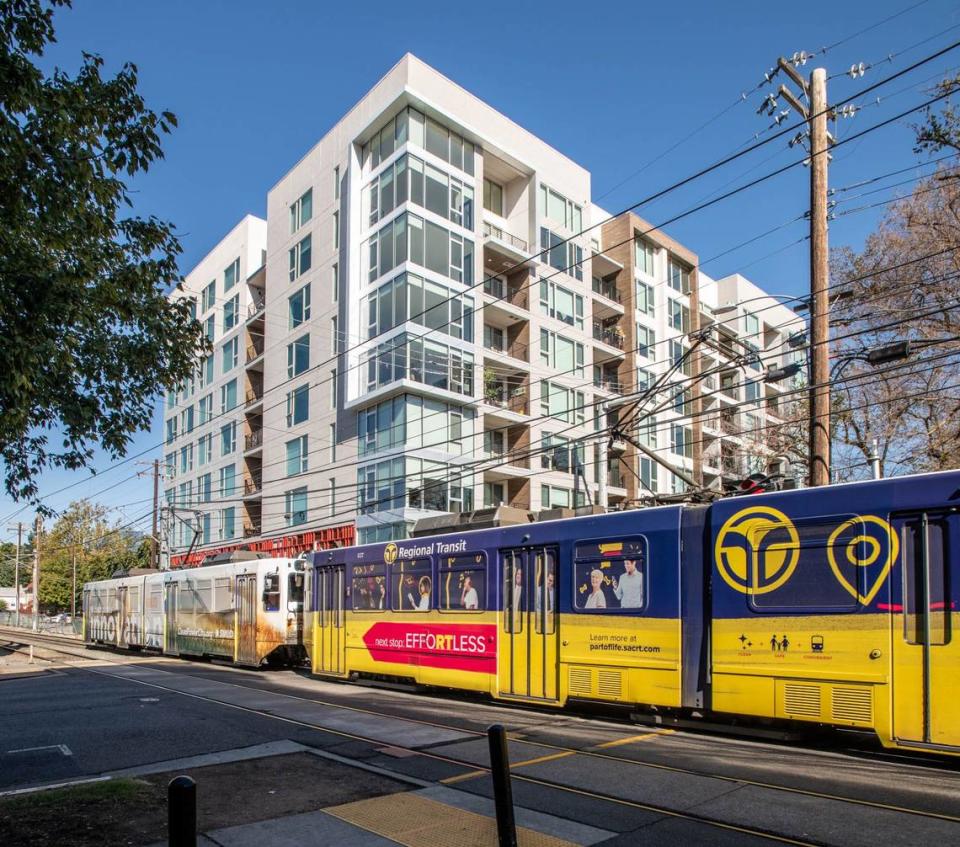
The Sacramento region ranks among the 10 worst metropolitan areas in the nation for air pollution, according to the American Lung Association. And more than half the toxic emissions found in our air are generated by transportation, particularly automobiles, studies show.
“Compact development like what we have in R street, where the housing is close to transit and jobs and other services, can significantly reduce greenhouse gas emissions by reducing driving, especially single occupancy driving,” said Anne Stausboll, who chaired the Mayors’ Commission on Climate Change for the cities of Sacramento and West Sacramento. “Let’s not let these underutilized corridors continue to deteriorate. Let’s turn them into something that’s thriving instead of building new roads and highways that are going to create more sprawl, more traffic, more congestion.”
This story is made possible, in part, with support from the Solutions Journalism Network .

